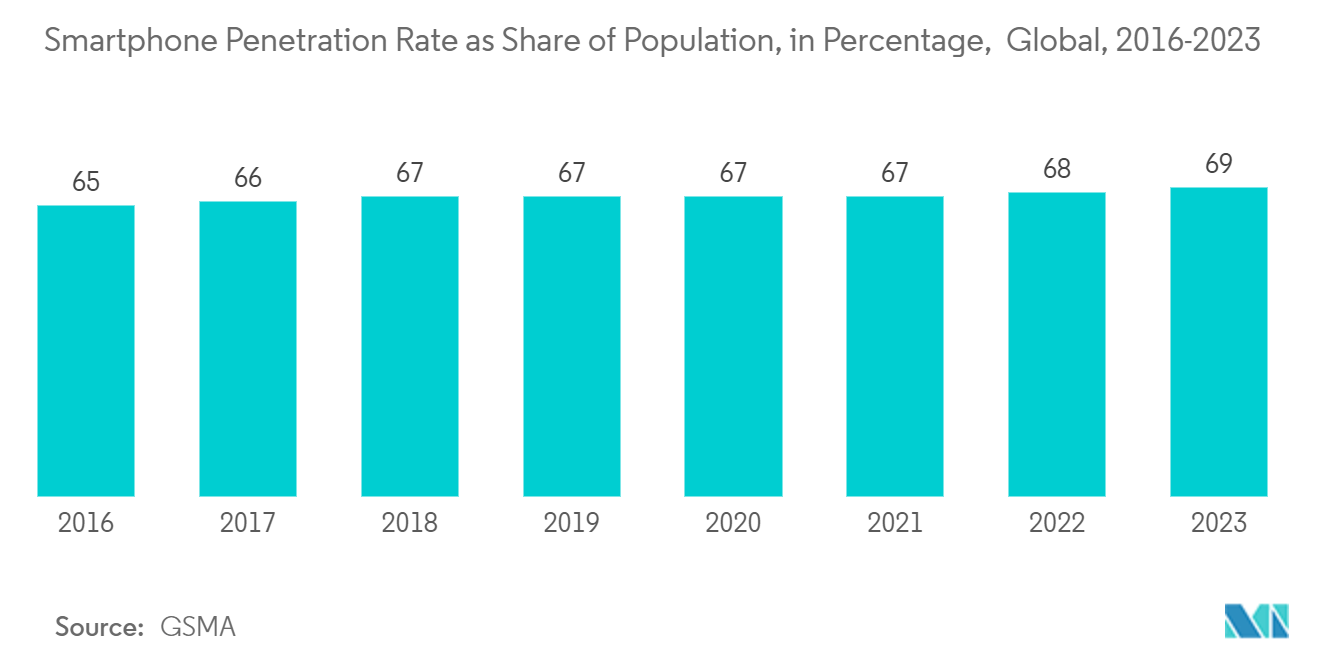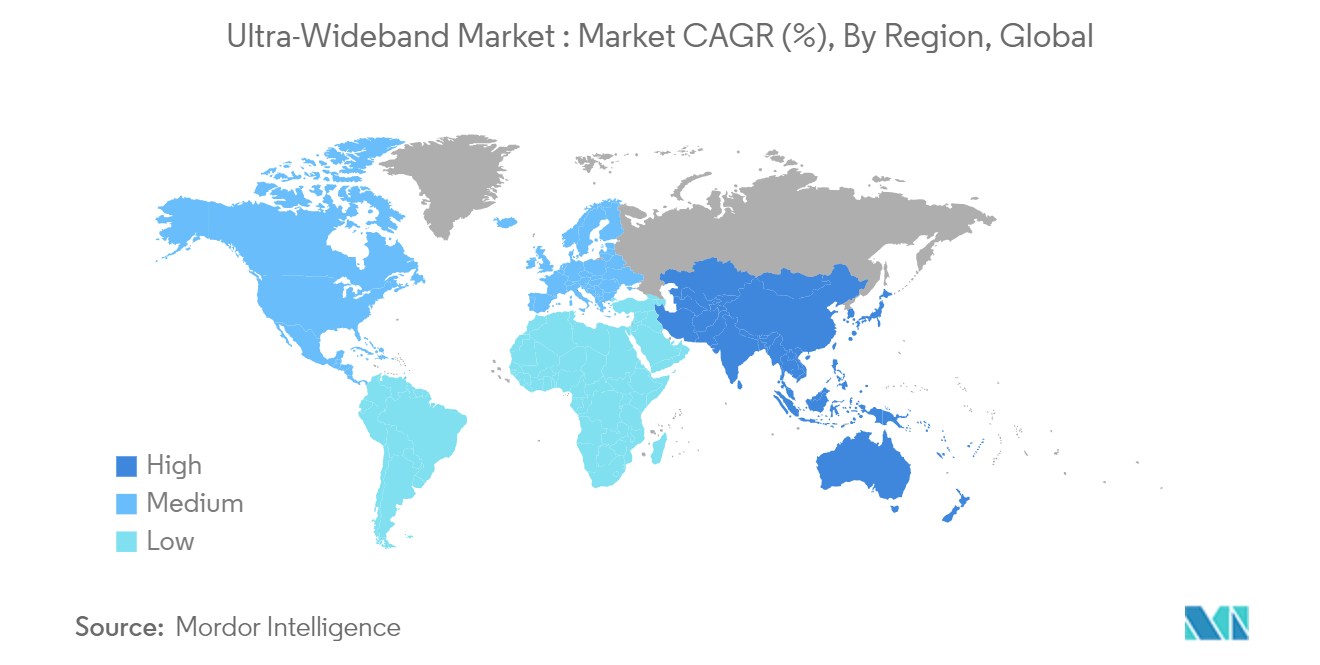Market Trends of Ultra-Wideband Industry
Consumer Electronics to be the Largest End-user Industry
- With its capability of providing high data rate wireless communications, ultra-wideband (UWB) technology has found significant applications in consumer electronic products in the past few years. The ultra-wideband technology is largely being deployed in various high-end smartphones (Apple, Samsung, and Google Pixel), some premium laptops (Lenovo), speakers (Homepod Mini) wearable devices, and its uses are rapidly increasing in various smart home applications, thus providing vast potential for the growth of the UWB market in the consumer electronics segment in coming years.
- UWB technology has gained significant smartphone adoption over the past few years, with Apple smartphone launching UWB chips (U1) in its iPhone 11 for spatial awareness, allowing iPhone 11 Pro to locate other U1-equipped Apple devices in September 2019 precisely. Since then, the company has deployed UWB technology in its flagship products, such as iPhone 12, iPhone 13, iPhone 14 and iPhone 15. The company also uses UWB technology in wearables such as the Apple Watch Series 6, Series 7, Series 8, and Series 9.
- Making smart homes more accessible and intuitive is another emerging UWB application. Embedding UWB technology within smart home devices allows them to automatically respond to specific user movements, such as turning on a fan or a light, playing a preferred playlist, or adjusting the temperature. Thus, this drives the demand for ultra-wideband in consumer electronics in the coming years.
- Smartphones are analyzed to hold the highest share shipment-wise owing to the high smartphone penetration in countries such as China, India, the United States, etc. According to GSMA, in 2023, the worldwide smartphone adoption rate reached 69%, increasing from the previous year in 2022. This information is derived from approximately 6.7 billion smartphone subscriptions globally and a total population of roughly 7.4 billion.

Asia-Pacific to Register Major Growth
- The increasing availability of UWB technology in smartphones and the growing adoption by many car OEMs in their next generation of vehicles to provide drivers with secure car access are fueling ultra-wideband market growth in Asia-Pacific.
- The growth of connected cars and EVs in the Asia-Pacific is expected to drive the market’s growth. For instance, according to the International Energy Agency, in 2023, China experienced the most electric car sales throughout Asia-Pacific, with over 8 million electric cars sold. Comparatively, approximately 82 thousand electric cars were sold in India in 2023.
- In February 2024, China’s Shenzhen Giant Microelectronics Company Limited, which supplies wireless system-on-chip (SoC), introduced an industry-leading GT1500 UWB SoC for ranging, positioning, and wireless connectivity applications at MWC 2024. GT1500 is ideally suited for space-constrained wearable and IoT product applications.
- The adoption of IoT in the manufacturing and automobile sectors is creating an opportunity for the market due to the increasing requirement for UWB technologies in IoT devices. The manufacturing and automotive sectors are likely to be primary drivers due to a strong manufacturing base, rapid automotive growth, and existing infrastructure over the forecast period.


